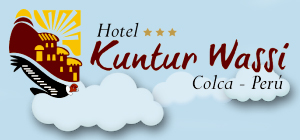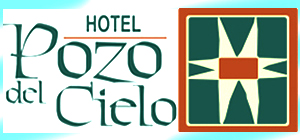Puno
Biking Tours
Classic Tours
- Uros and Taquile Islands - Puno
- Uros Amantani Taquile Islands - Puno 2 Day
- Sillustani Funeral Towers - Puno
- Chucuito Complex - Puno
- Llachon Community - Convivencial Tour 3 Day
- From Puno To The Colca Canyon Arequipa 2 Day
- From Puno To The Summit Of Chachani Mountain 2 Day
- From Puno To The Top Of Misti Volcano 2 Day
TOUR TO THE UROS FLOATING ISLANDS $40 USD Per Person - Group Service
Visit Man Made Islands Of The Lake Titicaca - Half Day Guided Boat Tour
The Uros Floating Islands are located just 5km west from Puno harbor, at 3810m and 30min in a boat ride from Puno, Peru.The Uros is the name of a group of pre-Incan people who live on 41 self-fashioned floating man made islets located in Lake Titicaca. The Uros use the Junko or Totora reeds to make boats (balsas mats) of bundled dried reeds as well as to make the islands themselves.
The Junko or Totora is a cattail type rush growing native in the lake. Its dense roots support the top layer, which rots and must be replaced regularly by stacking more reeds on top of the layer beneath. The islands change in size, and more are created as the need arises. The Uros residents of the islands create their homes from the reeds. The roofs are waterproof but not humidity resistant. Cooking fires are built on a layer of stones to protect the reeds. Residents wear layers of clothing, mostly woolen, to protect themselves from the cold, the wind, and the sun which at this altitude can burn fiercely. Many women still wear the distinctive derby type hat and full skirts. The larger and most visited islands appear many travelers as floating souvenirs, and to some extent these indeed are tourist-traps, their inhabitants having succeeded in living off tourism. However, most of the smaller islands remain isolated from visitors and still practice a traditional way of life that includes old-technique fishing, bird-trapping, and relying on Junko or Totora for housing and transportation.
These floating islands are the home of the Uros tribe, one which pre-dates the Incan civilization. According to their legends, they existed before the sun, when the earth was still dark and cold. They were impervious to drowning or being struck by lightning. They lost their status as super beings when they disobeyed universal order and mixed with humans, making them susceptible to contempt. They scattered, losing their identity, language, and customs. They became the Uros-Aymaras, and now speak Aymara.
The Uros traded with the Aymara tribe on the mainland, interbreeding with them and eventually abandoning the Uros language for that of the Aymara. About 500 years ago they lost their original language. When this pre-Incan civilization was conquered by the Incans, they had to pay taxes to them, and often were made slaves.
The islands are part of the TITICACA NATIONAL RESERVE, created in 1978 to preserve 37 thousand hectares of marsh reeds in the south and north sectors of Lake Titicaca. The reserve is divided into two sections, RAMIS, in the provinces of Huancané and Ramis; and Puno, in the province of the same name. The reserve protects over 60 species of native birds, four families of fish and 18 native amphibians species. There are three islands in the lake, Huaca Huacani, Toranipata and Santa María.
The floating islands are protected within the Bay of Puno and are home to 2000 Uros people, who claim to have "black blood" are consequently immune to the cold. They call themselves be kotsuña, or people of the lake, and consider themselves the owners of the lake and its waters. They continue living by fishing, weaving and now, tourism. They catch fish for themselves and to sell on the mainland. They also catch shore birds and ducks for eggs and food. Occasionally, if the level of the lake decreases, they may plant potatoes in soil created by the decaying reeds, but as a norm, they are not agricultural. The reed boats quite often have an animal face or shape on the prow and are a favorite photographic subject.
The purpose of the island settlements was originally defensive, and if a threat arose they could be moved. The largest island retains a watchtower almost entirely constructed of reeds.
Around 2,000 descendants of the Uros were counted in the 1997 census, although only a few hundred still live on and maintain the islands; most have moved to the mainland. The Uros also bury their dead on the mainland in special cemeteries.
The islands can be visited by a quick tour from Puno that take less than half an hour to reach the islands. Tour takes 3 hours. In alternative, you could take a longer tour, which includes also the natural islands of Amantaní and Taquile are located in the TITICACA NATIONAL RESERVE.
TOUR ITINERARY OF UROS MAN MADE ISLANDS
You will be picked up from your hotel in Puno around 6:50AM or 1:50PM and transfer to harbor of Puno and aboard the boat and excursion on the waters of Lake Titicaca. This tour takes around 4 hours to visit the manmade island located in the National Reserve of Titicaca.The Uros floating islands are inhabited by fishermen and hunters, the residents of the islands us cattail a type of rush, which grows in the lake, to create the conditions that ensure the islands stay afloat. During the tour also you have plenty time to visit the small local handicraft where you can by something made by local women, little museum is open where you can see different types of birds of the lake. Also is available a short trip on artesian boat made by locals with Junko or Totora reed.
Return to the port and transfer to your hotel.
NOTE: This tour can be done every day at 6:50AM or 1:50PM depending of the season and rain season.
TOUR TO THE UROS FLOATING ISLANDS INCLUDES
- 6:50AM or 1:50PM pick-up from hotel in Puno
- Transfer from hotel to the port
- English-speaking tour guide
- Speedboat and safe jacket
- Entrance fees to Titicaca National Reserve
- Drop-off at your hotel in Puno
| PRICE FOR TOUR TO THE UROS FLOATING ISLANDS | ||
| DATE | TOUR | COST |
| Any day (March-Dec) |
TOUR TO THE UROS FLOATING ISLANDS $40 USD Per Person Visit Man Made Islands Of The Lake Titicaca - Half Day Guided Boat Tour |
Group Service (join group) 1 to more participants $40 USD each Private Service (Private boat/guide) 1 participant $250 USD 2 participants $135 USD each 3 participants $100 USD each 4 participants $80 USD each 5 to more participants $65 USD each |
| 3% Discount For Travel Agents And Tour Operators All prices stated above are subject to change |
||
| Organized Groups: We offer private service and any time/day according request, ask our special rates for froup more than 5 participants | ||
| Group size: 12 - 25 participants per each guide and according the boat size | ||
| BOOK HERE: We highly recommended to book space prior you arrival to Peru | ||
EXCLUDED
- Hotel in Puno
- Travel and accident insurance
- Soft or alcoholic drinks
- Breakfast on the first day
- Tipping for guide and camp staff
WHAT YOU NEED TO BRING/CARRY
- Rain jacket or poncho
- Strong comfortable and waterproof footwear
- Sweater and jacket (something warm)
- Water bottle
- Hat or cap to protect you from the sun
- Sun block (sun protection cream)
- Selection of small snacks, chocolate, dried fruit, biscuits etc,
- Camera, plenty of film and spare batteries
- Sunglasses
- You also need to bring your original passport on the tripl
- Optional: walking sticks or poles
DEPARTURES
Daily departures are available all year at 6:50AM or 1:50PM.PRIVATE SERVICE
We provide a private official tour guide and boat to make your trip as comfortable as possible and the itinerary is flexible according the request of our clients.PRIVATE LAND TRANSFERS FROM PUNO TO (or vice versa):
JULIACA AIRPORT (52KM - 1 1/2HRS) $72 USDCUSCO (386KM - 6HRS) $540 USD
CHIVAY - COLCA VALLEY (260KM - 5HRS) $350 USD
CABANACONDE - COLCA CANYON (312KM - 7HRS) $380 USD
AREQUIPA (293KM - 5HRS) $320 USD
CHIVAY – CRUZ DEL CONDOR - AREQUIPA (462KM - 2 DAYS) $550 USD
DESAGUADERO (border Peru/Bolivia - 147KM - 2 1/2HRS) $250 USD
LA PAZ ( Aramu Muru, Desaguadero, Tiahuanaku - 270KM - 6HRS) $410 USD
TACNA (border Peru/Chile - 404KM - 8HRS) $650 USD
PUERTO MALDONADO (596KM - 10HRS) $780 USD
INCLUDES
Experienced driver (Spanish-Speaking)
Private transport up to 4 people (Automobile/SUV or van)
Pick-up from hotel/airport or bus station
Drop-off at hotel/airport or bus station
Fuel & Toll tax
Medical bottle of oxygen
Accident insurance (SOAT)
Luggage compartment
OPTIONAL: English-Speaking driver is available for additional $30 USD per day.
EXCLUDED: Food/drinks - Entrance to archaeological site - Hotel reservation - Travel insurance - Gratuities for driver.
TIME FOR DRIVER (1HR): For long distance transfer more than 6 hours driving the driver needs 1 hour stop for food, for resting, check the vehicle and then continue driving.
RECOMMENDATION: After the transfer and before you leave the vehicle our company recommend you to verify all your belongings (no forget) because the transport is going to return very soon to the origin of the service.
CONTACT US
For more information about the tour or you request a new date to departure for this tour, please contact us....
Some of our clients e-mail us saying our confirmation e-mails are placed to their spam folder rather than their inbox. We recommend to modify your JUNK or SPAM FILTER SETTINGS to receive our e-mail peruadventurestours@hotmail.com on the correct inbox. You may also want to add this email address to your list of known contacts. This will prevent our responses from being filtered into your Junk or Spam mail folder.
References Of Travel Guide Books To Peru
ADDITIONAL BOOKING SERVICES
- Camping Zone In Arequipa
- Bus Tickets All Over Peru
- Guided Tour Bus From Cusco To Puno
- Bus Transfer From Arequipa To Puno
- Bus Transfer From Colca Canyon To Puno
- Bus Transfer From Puno To Arequipa
- Airplane Tickets In Peru
- Railway Tickets In Peru
- Learn Spanish In Peru
- Rent A Car In Peru
- Rental Camping Gear In Peru
- Work In Peru
- Donation Program
PERU TRAVEL INFORMATION
- Embassies And Consulates In Peru
- Information Of South American Camelids
- Tips To Travel Around Peru
- Peru Adventure Magazine
- History Of The Incas And Tawantinsuyo Territory
- Inti Raymi Celebration In Cusco - The Festival Of The Sun God
- Travel Insurance To Peru
- Peruvian Government Taxes
- Travel Agent
PERUVIAN GASTRONOMY INFORMATION
- Peruvian Food
- History Of The Peruvian Cuisine
- Inca Cuisine
- Cuisine Of The Central Coast Of Peru
- Cuisine Of The Northen Coast Of Peru
- Cuisine Of The Andes Of Peru
- Cuisine Of Peruvian Jungle
- Art Culinary Of Arequipa
- Desserts And Sweets Dishes Of Peru
- Peruvian Recipes
- Peru Gastronomic Festivals
- Cultivation Of Ancient Plants Of Peru
- Coca Leaf







